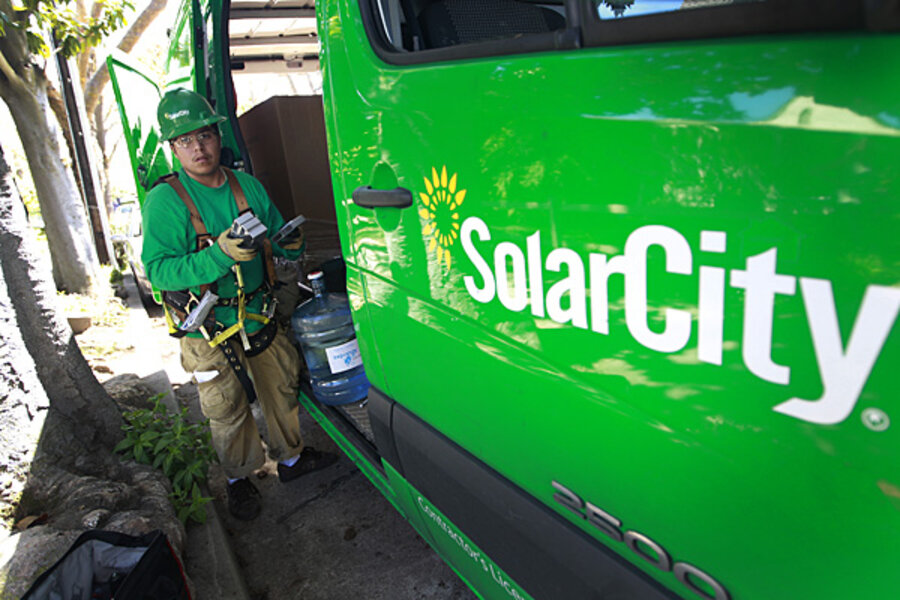SolarCity IPO share price slashed. Cloudy skies ahead for solar?
Loading...
The business outlook for SolarCity Corp. dimmed this week.
The installer of residential solar systems postponed its much-anticipated announcement of its initial public offering Tuesday, only to sharply reduce its share price in announcing its IPO the following day.
Instead of the $13 to $15 per share price it previously expected, SolarCity now says it will sell its IPO shares at $8 apiece, according to a filing with the US Securities and Exchange Commission Wednesday. The San Mateo, Calif.,-based company also announced it would offer 11.5 million shares of stock, up from 10.1 million shares. The IPO could be floated later this week.
The price reduction cuts the company's previously estimated value of nearly $1 billion almost in half, to about $584.6 million.
SolarCity is regarded as one of the country's most promising cleantech companies, with revenues more than quadrupling in the last five years. So why the cold feet?
"There was clearly lack of institutional demand at the original asking price," Theo O'Neil, managing director of Litchfield Hills Research, told the San Jose Mercury News. "The institutions are clearly interested in a lower price, and it is up to Elon [Musk, chairman of SolarCity] and the rest to take a lower price or punt."
SolarCity may suffer from an association fallacy. The six-year-old company has flourished where others have floundered. Earlier this year BrightSource Energy, a solar thermal start-up, nixed its IPO amid waning investor interest. High-profile bankrupt Solyndra has become the pariah of a US solar industry flooded with inexpensive Chinese technology. The San Francisco Chronicle points out that SolarCity has remained sheltered from some of the turbulence, largely thanks to it being a provider – not a producer – of solar panels.
Solar installation, actually, is booming. The industry's primary trade association reported Tuesday a record year for installed solar energy capacity – anticipating a 70 percent jump over 2011.
The Solar Energy Industries Association estimates a record 3.2 gigawatts – enough electricity to power more than half a million average US homes – was installed in 2012. Residential, commercial, and utility-scale solar systems have all seen significant growth, according to SEIA, due largely to dropping prices and the market stability provided by an investment tax credit in place through 2016.
Rhone Resch, CEO and president of SEIA, told reporters in a phone call Tuesday that he expects solar growth to be even better in 2013.





